There was some
very important news recently about
neutrino oscillation, which I wrote about
here. Rather than go into the details there, it seemed better to put them in a separate article, and this is it.
To recap,
neutrinos are
leptons, and like the better known leptons (electrons, muons, taus), neutrinos occur in three
generations. The main characteristic that distinguishes the different generations of leptons is the
quantum state called "
flavor". Flavor is a
quantum number that can, in principle, be measured. A neutrino is not necessarily in just a single flavor state; it can be in a
quantum superposition of
pure states.
Every neutrino also has a corresponding antineutrino of the same flavor, and almost everything to be said here applies equally to antineutrinos. (It isn't entirely clear whether neutrinos and antineutrinos are actually distinct, or whether this
parity can mutate into its opposite, but that's a whole other topic.)
The flavor associated with a neutrino in a pure state is named after the corresponding lepton occurring in a particle interaction that creates or destroys the neutrino. Thus there are electron neutrinos, muon neutrinos, and tau neutrinos (denoted by ν
e, ν
μ, ν
τ, respectively). Neutrinos are created or destroyed only in particle interactions governed by the
weak force – neutrinos do not feel the
strong force at all. And since all neutrinos have no electrical charge, they do not feel the electromagnetic force either. However, as will be noted later, neutrinos have nonzero mass, so they feel gravitational force.
For example, the decay of a free neutron (n → p + e
- + ̅ν
e), creates a proton, an electron, and an electron antineutrino. This process is known as
beta decay, since the electrons that come out used to be called "beta rays". The reverse process, inverse beta decay (̅ν
e + p → e
+ + n), destroys an electron antineutrino, and can be used to detect antineutrinos indirectly by observing the positron that results. (The positron causes
Cherenkov radiation in a liquid medium.) However, since neutrinos almost never interact with other particles, this reaction is very rare. It's estimated that a neutrino would have to pass through several light-years of solid lead in order to have a 50% chance of interaction with a lead atom. So hardly any neutrinos register in detectors, but fortunately there are so many of them that detection is possible.
Electron antineutrinos are produced in copious quantities in nuclear reactors, because of beta decay and other nuclear reactions that yield the energy from a nuclear reactor. They are also produced in abundance from the nuclear reactions that power the Sun and most other stars. Indeed, attempts to measure the neutrino flux from the Sun are what first brought attention to the phenomenon of oscillation. The size of this flux was simply too small to account for the known energy output of the Sun. This discrepancy was known as the
Solar neutrino problem.
The problem was definitively resolved only just over a decade ago, when it was shown that the discrepancy was real, not simply an artifact of some inadequacy of detectors. The same discrepancy appeared in many quite different types of experiments, and a theory of neutrino oscillation that had already been worked out was able to account for the discrepancies. In a nutshell, flavor is a quantum number, so it is only known when it is observed.
The weird thing is that what is measured may change every time it is observed, because flavor is not a conserved quantum number in weak force interactions. There is some probability of observing any of the three possible flavor states in any measurement. This is another way of saying that actual neutrinos are in a superposition – a mixing – of flavor states. The probability of observing a particular state also fluctuates over time. Since some antineutrinos that originated with electron flavor have another flavor when they pass through a detector, they can no longer interact in a way the detector is able to register, so they appear to be missing.
Discrepancies were also noted in trying to count neutrinos originating from other sources, such as neutrinos produced in nuclear reactors. This problem affects all three neutrino flavors. Muon neutrinos are produced in
muon decays, which affect muons produced naturally in the atmosphere by cosmic rays. Muons created in particle accelerators also produce muon neutrinos when they decay. Experiments that detect only muon neutrinos also find discrepancies.
But what drives this oscillation? To better understand that, it's necessary to consider the other thing that distinguishes particles, including neutrinos, of the three different generations, namely mass.
The
Standard Model originally assumed neutrino mass was zero, but this isn't required, and the theory can be modified to allow neutrino mass. However, neutrino mass is extremely difficult to measure, because neutrinos react so infrequently with other particles. So mass measurements have to be made indirectly. Further, experiments to date have been unable to do more than place rather loose upper and lower limits on possible masses. As it turns out, though, neutrino oscillation studies do indicate the
differences in the square of the value of mass for different mass states.
Of course, neutrinos were hypothesized in the first place, by
Wolfgang Pauli, in order to account for conservation of energy, momentum, and angular momentum in particle interactions like neutron decay. But if neutrinos travel at the speed of light, like photons, they could be massless and still possess energy and momentum. It's quite possible for neutrinos to have rather high energy (MeV range and above), even though they have very little rest mass, because they are found to travel at very close to the speed of light. (But almost certainly
not at or above the speed of light.)
Astrophysics provides some very rough indirect mass estimates. A crude estimation of neutrino mass can be deduced from the estimated amount of non-baryonic
dark matter in the universe (about 26% of the universe's total mass-energy content). Conditions in the very early universe fixed the total number density of all 3 flavors of neutrinos at 3/11 the number density of
cosmic microwave background photons. From that it can be estimated that even if
all non-baryonic dark matter were in the form of neutrinos, the average neutrino mass could be at most ~4 eV. Since it seems likely that neutrinos actually make up at most a few percent of dark matter, an average mass limit of < 0.3 eV seems quite likely. For comparison, the rest mass of an electron of 511 KeV – a difference of at least 6 orders of magnitude.
Gravitational lensing data from studies of galaxy clusters has provided a second estimate for the average mass limit – 1.5 eV. Muon and tau neutrinos should be far rarer than electron neutrinos, so the average mass will be strongly dominated by electron neutrinos. Muon and tau neutrinos could be much more massive without affecting the average significantly.
A third even looser estimate, specifically for electron antineutrinos, comes from observations of
Supernova 1987a. 24 electron antineutrinos were detected in association with that event. Although they were detected about 3 hours before the first visible light, this is explained by supernova models, which indicate that neutrinos will be emitted before most photons, since the neutrinos hardly interact with collapsing stellar material in the supernova, while photons interact strongly. Allowing for that, the time of flight for neutrinos from the supernova, which occurred at a distance of ~168,000 light years, indicates a velocity just enough less than the speed of light that the mass could be at most 16 eV.
Experiments to measure neutrino mass directly take extended periods of time, due to the slow rate of detection, so all that can actually be observed is the time average of mass, when appropriate probabilities of each state are included. One relatively early measurement, the
Mainz experiment of 1999, gave the expected value of mass of electron antineutrinos from beta decay as at most 2.2 eV, at the 95% confidence level.
Discussing "the" mass of a neutrino at all is somewhat problematical, since mass is a quantum state, just like flavor is. So a neutrino is in a superposition of mass states before it is observed. There are three possible mass states, associated with each of the three neutrino generations, but they do not correspond directly to the flavor states. Instead, flavor states are related to mass states by a
unitary matrix – the
Pontecorvo–Maki–Nakagawa–Sakata (PMNS) matrix.
In the simple case in which there are 3 flavor states and 3 mass states there are 4 parameters that determine the matrix entries: three "mixing angles" (θ
12, θ
13, θ
23), and a fourth parameter (δ) that is nonzero only if neutrino oscillation violates CP symmetry (i. e. there is a difference in the behavior of neutrinos and antineutrinos). (The θ parameters are described as "angles" because they occur as arguments of trigonometric functions.) So far, fairly precise values have been determined for the three mixing angles (θ
13 most recently). (In case neutrinos are
Majorana particles, i. e. their own antiparticles, or there's even more weirdness, such as
sterile neutrinos, the matrix is more complicated.)
There's one additional complication for observing a specific mass state when a measurement is done. Quantum mechanics describes quantum particles as waves of a certain frequency. This frequency is related to particle mass, because special relativity relates mass to energy by E=mc
2, and energy is related to frequency by E=hν, where ν is frequency and h is
Planck's constant. So mc
2=hν, and if mass can vary from one observation to another, so can frequency.
The net result is that different mass states propagate at different speeds, and the PMNS relation transfers this effect to flavor states. Interference between waves for different flavor states is the basic cause of neutrino oscillation. So the probabilities associated with observation of specific flavor states depend in a complicated way on the mass differences between the specific mass states, as well as a particle's energy and the distance it has traveled since creation.
For example, consider the probability that when the flavor of an electron antineutrino is observed after it has traveled a distance of L (meters) from its source. The probability that the particle will oscillate and
not have electron flavor when observed works out to be approximately
P ≈ sin2(2θ13) sin2(1.267Δm231 L/E)
Here θ
13 is one of the three parameters that describe neutrino oscillation, Δm
231 is the difference in squared mass between the first and third mass state, and E is the neutrino energy (in MeV). Analogous formulas apply to oscillation of muon and tau neutrinos.
Several things can be noted from this formula. Immediately after the particle is created, at L=0, the probability is 0 that its flavor has changed (because of the second sin
2 factor). The probability varies with the distance that a neutrino travels, fluctuating periodically as L increases. It reaches a maximum every time L is such that the second factor is 1. The first factor determines what the maximum of the probability can be, and it will be nonzero if θ
13 is. So θ
13 ≠ 0 is necessary for oscillation to occur. It's also sufficient, as long as Δm
231 ≠ 0.
The are three possible differences of squares of mass states, but only two are independent, since, for instance, Δm
231 = Δm
232 + Δm
221. These differences have been measured fairly precisely: Δm
232 ≈ 2.32×10
-3 (eV)
2, Δm
221 ≈ 7.59×10
-5 (eV)
2. These results don't tell a lot about the actual sizes of the mass states, except that they are all nonzero. Consequently all neutrino types experience oscillation, provided all the mixing angles are also nonzero too. In addition, there must be at least one mass state as large as √2.32×10
-3 ≈ 0.048 eV.
As for the mixing angles, sin
2(2θ
13) was
just measured with decent precision to be about 0.092, and so θ
13 ≈ 8.8°. Earlier measurements didn't determine θ
13 to be nonzero with high significance, but the new result does, at 5.2σ. Previous measurements found sin
2(2θ
12) ≈ 0.861 and sin
2(2θ
23) ≈ 0.97, with corresponding angles 34.1° and 40.0°.
Labels: neutrinos, particle physics

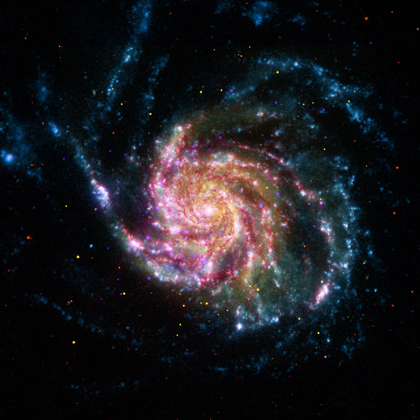
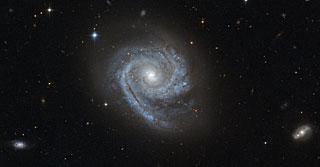
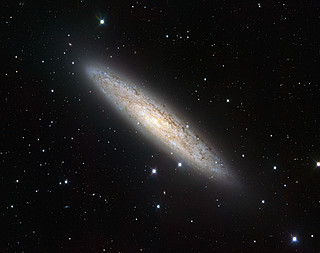
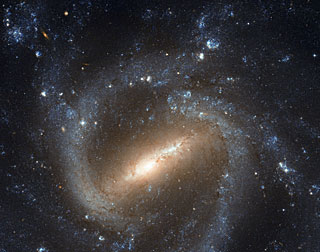
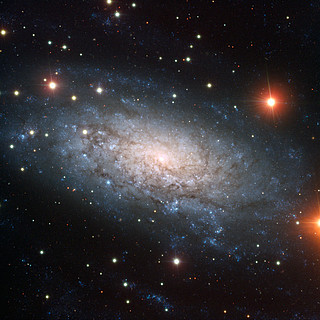
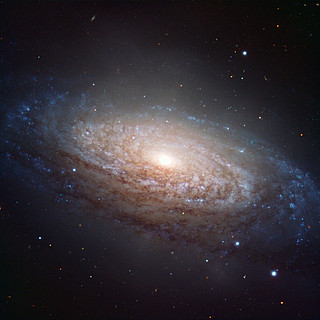
 Subscribe to posts
Subscribe to posts


 Google
Google Delicious
Delicious Diigo
Diigo Twine
Twine StumbleUpon
StumbleUpon






